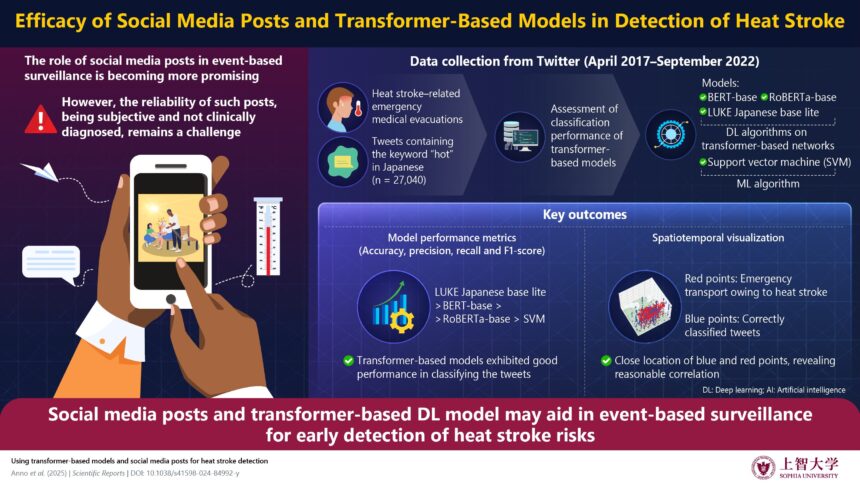Heat stroke is a serious health concern, particularly in the face of rising global temperatures and more frequent heat waves. The need for real-time methods to detect and respond to heat stroke risks has become increasingly important to protect vulnerable populations.
A recent study conducted by researchers from Sophia University in Japan has shown promising results in using social media posts and transformer-based deep learning models to identify heat stroke events in Nagoya City. By combining advanced technologies with social media data, the team was able to collect and analyze tweets containing relevant keywords in Japanese related to heat stroke risks.
The study, published in Scientific Reports, utilized transformer-based models like BERT, RoBERTa, and LUKE Japanese base lite, along with a support vector machine (SVM) model to identify tweets indicating heat stroke events. The researchers collected over 27,000 tweets over a five-year period and trained the models to identify and classify relevant tweets accurately.
Results showed that the LUKE Japanese base lite model outperformed the other models, achieving an accuracy of 85.52%. This high accuracy rate demonstrates the potential of using transformer-based models to detect heat stroke risks effectively. Additionally, the study used time-space visualizations to map heat stroke-related emergency medical evacuations and geo-tagged tweets, highlighting the real-time surveillance capabilities of social media data.
Professor Sumiko Anno, the lead researcher, emphasized the importance of leveraging social media for public health surveillance and early detection of heat stroke risks. The findings suggest that combining Japanese tweets with transformer-based models can provide a valuable tool for monitoring heat stroke risks during extreme weather events.
The research paves the way for future applications of deep learning and social media data in real-time health monitoring systems. As climate change continues to pose challenges to public health, early detection and response to heat stroke risks could play a vital role in safeguarding communities.
Moving forward, the research team plans to establish an early warning system for heat stroke in Aichi Prefecture and expand it to a nationwide alert system for Japan. By collaborating with local authorities and conducting spatiotemporal analyses, the team aims to enhance public health surveillance and adapt the methodology for monitoring other infectious diseases.
In conclusion, the study showcases the potential of using transformer-based models and social media data for early detection of heat stroke risks. The integration of advanced technologies with real-time data monitoring could prove instrumental in addressing health challenges posed by climate change.








